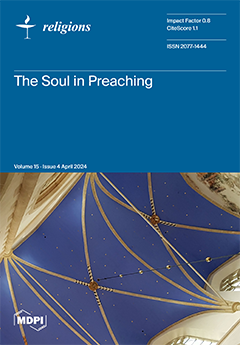The purpose of this research is to examine whether Buddhist ethics can improve the health and well-being of Buddhist practitioners during pandemics like COVID-19. It is hypothesized that diseases are part of suffering, and Buddhist teachings aim to eliminate the suffering of all
[...] Read more.
The purpose of this research is to examine whether Buddhist ethics can improve the health and well-being of Buddhist practitioners during pandemics like COVID-19. It is hypothesized that diseases are part of suffering, and Buddhist teachings aim to eliminate the suffering of all beings. Buddhism also offers ethical codes of conduct for its practitioners to improve their health and well-being. So, the Buddha’s teaching or Buddhist ethics, when practiced seriously, should be able to improve one’s health, physically and mentally, enhancing the well-being of all Buddhist practitioners during the spread of all pandemics including COVID-19. The present study found that Buddhist ethical practices like the chanting of Buddhist
suttas and the development of mindfulness, concentration/meditation, and insight (
vipassanā) can improve both physical and mental health, which are important for dealing with any pandemic, tremendously. If the cores of Buddhist ethics (morality, meditation, and wisdom) are perfectly practiced, not only will one live with good physical and mental health but one also will be able to eliminate all the mental defilements that are the root causes of all illnesses and thus enter
nibbāna, the state of mind that is beyond all sources of suffering including pandemics/epidemics. More specifically, this paper highlights a set of Buddhist practices, called four
bhāvanās (types of development), that can be used to improve health and well-being during any pandemic.
Full article





